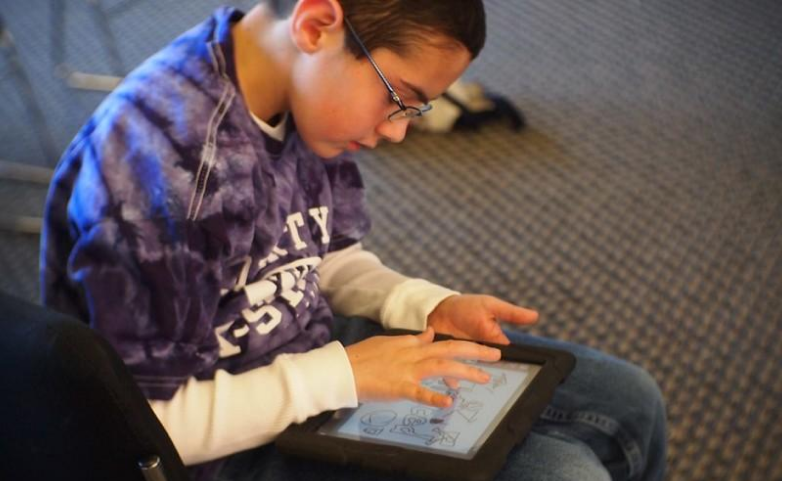What it means: Also referred to as distance learning, remote learning takes place when students and teachers interact outside bricks-and-mortar classrooms. In some cases, teachers use video-conferencing tools to deliver live group lessons, with students completing either online or paper assignments. In other instances, teachers post videos and interactive assignments with the help of a digital platform. And in some cases, teachers distribute paper packets for students to complete at home and then return for grading.
Why it matters: With most schools closed nationally, the focus has shifted to how to support learning at home in some form for millions of students. The precise number of schools that have opted for distance learning isn’t clear. It’s up to individual districts and states to decide how to handle school closures, whether to continue offering some kind of distance learning, and what types of lessons they offer. (The National Education Association’s suggestions are here.) The Center on Reinventing Public Education is collecting data on steps districts across the country are taking to support student learning during the pandemic, including whether they are providing distance learning, in what form, and whether it “counts” as academic credit while schools are closed.
Many districts, including those in Fresno, California, and Fairfax, Virginia, are making online — and optional — resources available to students and families to study at home. Other districts, like in Guilford, Connecticut, are continuing credit-bearing classes with an online platform that allows parents to monitor their children’s interactions and progress. The wide spectrum of district plans provides not only a massive natural experiment in rapid-response distance learning, but could also make it challenging for researchers to later study which initiatives were the most effective for students. In addition to the obvious academic challenges, educators, parents, and students themselves say they’re looking for ways to replicate the social aspect of “going to school,” which has been a difficult loss for young people.
Who’s talking about it: Practically everyone involved in or directly affected by K-12 education. That includes parents all over the country — many of whom are now getting a better understanding of the complexities of delivering daily instruction to students with wide-ranging skill levels and interests. Education reporters are paying close attention to some of the more practical elements of this seismic shift to remote learning. They are exploring a variety of issues, such as what districts are doing for students who don’t have reliable internet — or computers — at home. In New York City, one Brooklyn middle school delivered computers to every student who needed one, reported Michael Elsen-Rooney of The New York Daily News. By the time the virtual classrooms opened for the first day of digital instruction, 95 percent of students were online, on time.
Also at issue: Some teachers are being asked to devise online lesson plans on short notice with little or no guidance, as the Associated Press reported. Some districts have opted not to provide online learning because of concerns that it can’t be equitably provided to all students. In Boston, the teachers’ union negotiated a provisional agreement with the district that online lessons will be considered “supplemental.” Students who don’t participate in the digital classes won’t be penalized on their final grades, reported The Boston Globe’s Jamie Vaznis. And U.S. Secretary of Education Betsy DeVos has announced broad waivers for states from what would have otherwise been mandatory state testing this year per the federal Every Student Succeeds Act (ESSA).
What are the challenges and opportunities for students and schools? It’s important to remember that the scale and scope of remote learning efforts in response to the COVID-19 pandemic are unprecedented, said Robin Lake, the director of the Center on Reinventing Public Education. There’s no clear path for reporters looking to evaluate the quality of a remote learning plan, but Lake identified some hallmarks of good ones during an EWA webinar. Among them: providing students with as much connection as possible to the teachers who already know them – whether through exchanging written work or using online tools, Lake said. “Those personal connections are critical right now,” she said. CRPE is tracking what districts are doing, including whether students are required to complete work for grades, what kind of training and support teachers are receiving, and whether there’s a process in place for tracking both student engagement and academic outcomes.
Reporters also should look at how districts are handling services for special education students, closing technology gaps for families, and helping parents who are feeling overwhelmed by taking on the role of lead teacher at home. Protecting student privacy is also a concern with online learning platforms, said Benjamin Herold, who covers technology issues for Education Week. Some teachers are using websites and apps that collect personal information about participants. That’s a problem for remote learning when most K-12 students are minors, and many are under age 13 — the legal federal threshold for using sites like Instagram and Facebook, Herold explained. When covering a district’s remote learning plan, education reporters should keep an eye out for longer-term fiscal consequences, like getting locked into a platform for an extended contract that lasts far beyond what’s predicted for the current pandemic, Herold said.
Want to know more? EWA held a webinar on remote learning in the time of COVID-19. Watch the replay here. The Aurora Institute (formerly iNACOL), a nonprofit advocacy organization that consults with districts on plans for competency based and online learning models, has compiled a Continuity of Learning Resources to help K-12 districts navigate the pandemic. The national State Educational Technology Directors Association and the Consortium for School Networking are also good resources to find out how school administrators are sharing information and ideas. In addition, find out more from EWA’s Topics Page on Digital Learning and Technology, including recent news coverage, key reports, and questions to ask. EWA also produced a tip sheet for journalists on student privacy (written by Herold).




